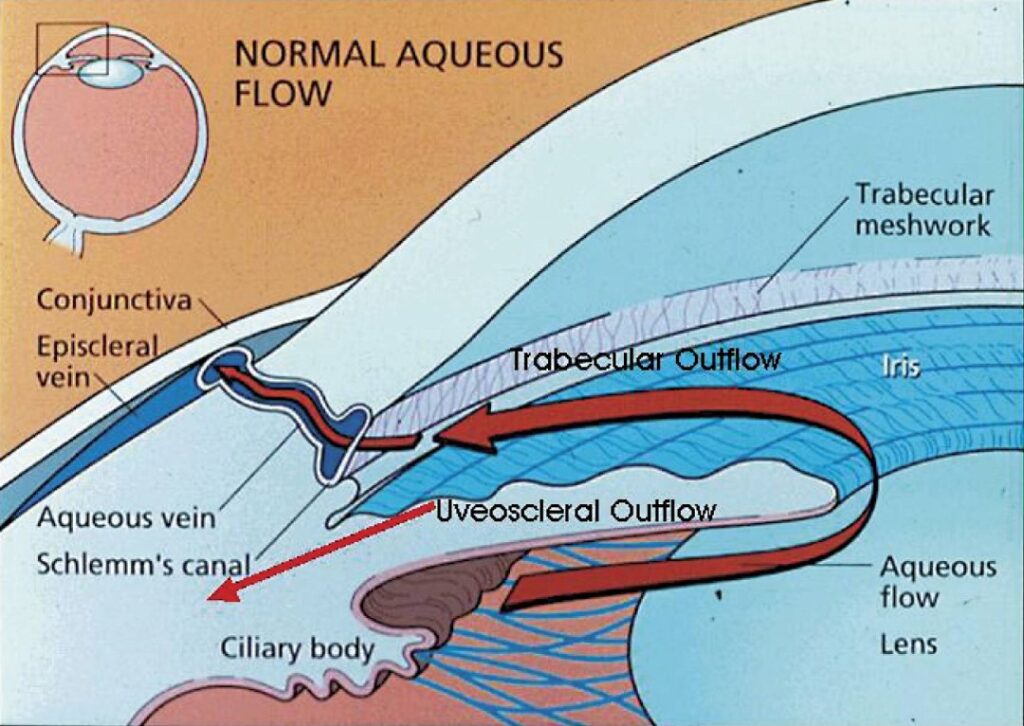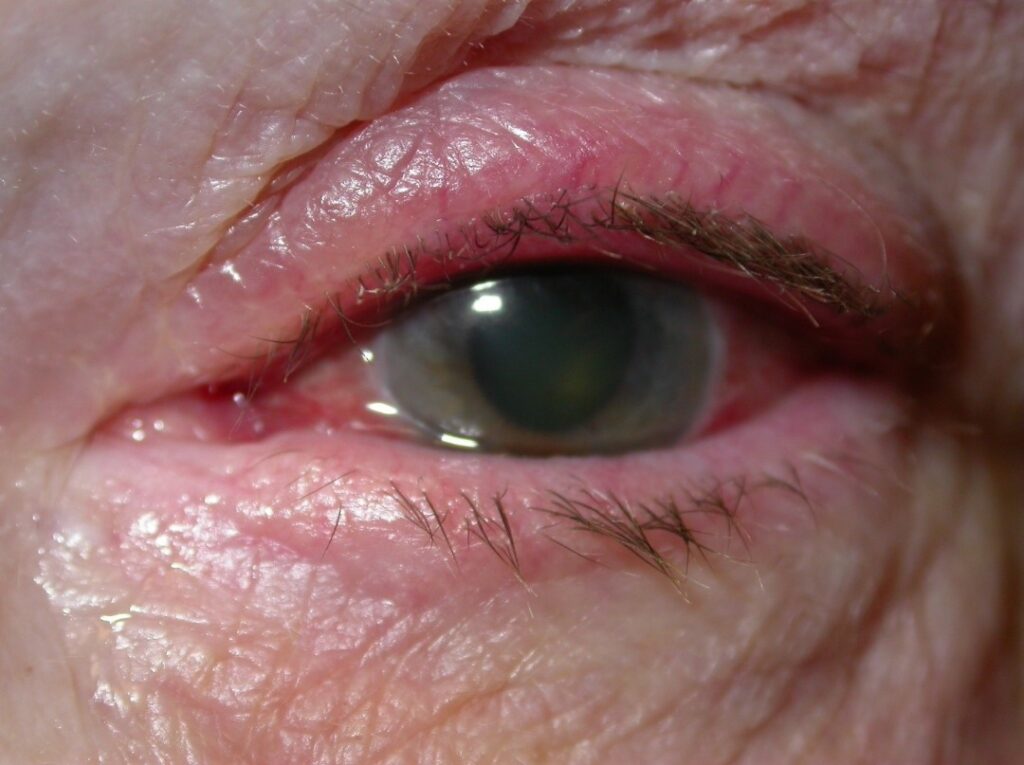Acute glaucoma is much better understood than chronic glaucoma. It is a mechanical blockage of fluid trying to exit the eye. It occurs suddenly, and within hours causes the eye pressure to raise so much that the eye becomes red, painful and blurred. If the eye pressure is not treated the same day, the sight loss may become permanent.

The aqueous fluid that normally fills the eye is produced by the ciliary body behind the iris, crains through the pupil, and exits the eye from the trabecular mesh at the iris root. A blockage anywhere in this system causes the pressure to build up rapidly.
Contributing factors that pre-dispose to angle closure may be long sightedness, a family history of angle closure, or a significant cataract. Treatment consists of lowering the eye pressure with drops and tablets and then lasering a hole in the iris rook to allow fluid to bypass the blockage. Failing this urgent cataract surgery is required.

An eye with acute glaucoma. The eye is red and painful. The patient feels nauseaus. The clear window (cornea) is cloudy, obscuring the iris and pupil details. The pupil is fixed and mid-dilated. This requires urgent treatment to prevent permanent loss of sight.
